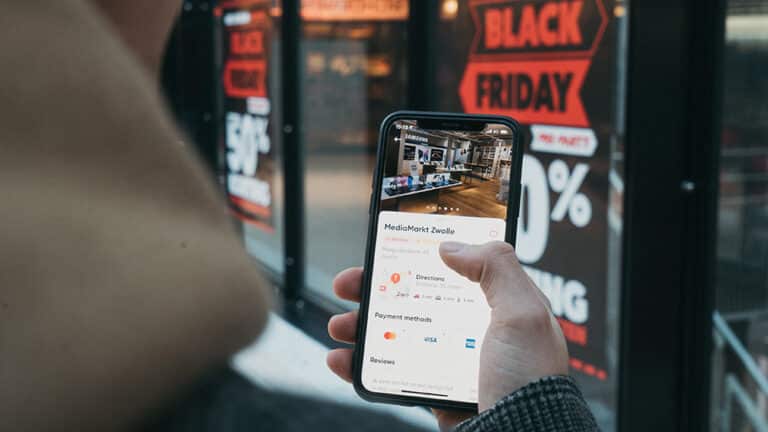Before you start with your technical set-up of your platforms, you need to go through what your starting position looks like. Go through your website to ensure what is possible to do based on how your website looks like today. You also need to set an objective with your campaign to see what is actually valuable data to measure. Is the goal to increase brand awareness or to drive conversions?
Below you will find a few tips on what you need to include in your technical implementation to be able to measure your results in social media.
Install your pixel
To get started, you need to install a pixel in the channels you choose to use for your campaign. A pixel is used to analyze how effective your ads are by measuring each event that the user makes on your site. Here’s some resources for pixel setups:
Install Snap Pixel
Create and install a Facebook pixel
Install the Pinterest tag
Install TikTok Pixel
Create a Twitter Website Tag
Via your pixel you can ensure the following:
That your ads reach the right audience
You can ensure that you reach the right target group and that they perform the action that you have as a goal. But you can also prospect new customers who have visited your website through the data you get from this event.
Increase conversions
You can set up automatic bidding to target people who tend to convert on your website.
Measure your ads performance
You can gain a better understanding of your ads by measuring what happens when your target audience sees your ad and interacts with it.
Google Tag Manager
Your pixels are installed as tags in Google Tag Manager. GTM is a third-party tool and is free to use to manage your tags that you link on your website and in other mobile apps. You use the tool to collect data from users and to track how the user moves on your site, or what the user in turn chooses to interact with. These results allow you to optimize your site to achieve better results when it comes to conversions, for example. It is possible to implement the same technical set in all the social channels and the important thing is that the set is the same, in order to then be able to compare the data.
*New updates of IOS have taken place in 2021, which includes that your company will own your data, advertising account and pixels. You can read more about this here.
Google Analytics
GTM can be linked to Google Analytics, where you can collect all the data and information you receive. These are the statistics that you can analyze and in this way can begin to understand your campaigns in order to be able to optimize them.
You can measure this data depending on what your objective for the campaign is:
PageView
Measures that the user has come into contact with the brand digitally. This event is measured in order to be able to create retargeting target groups and to be able to exclude and become the most important division in the customer journey. But also to ensure the cold target groups.
Interactions per Visit
This event is divided and you can measure this:
- Specific page views of key pages that are related to the product you are focusing on for your ads.
- How far down the user scrolls on your website.
- The time the user spends on your website.
In the B2B segment, only specific page views are necessary to measure, depending on what you get for data, so you can segment the target group depending on how it has interacted on the landing page.
Conversions
- Business-to-consumer
This event is in B2C, valuable to measure to see purchases or transactions made during the campaign. In order for your customers in the B2C segment to reach the final phase and reach the main goal, it is important to have clear call-to-actions for the user in order to be able to move on from your ad to the landing page and navigate there. Be sure to value your conversion pixel and if you have a multi-market, currency is to keep in mind. You choose where you want to use the value of your pixels manually or dynamically all the way.
- Business-to-business.
In B2B, the main focus is not on measuring conversions that means purchases or transactions it is lead generation that is important. You can get a lead by the user downloading a report and then filling in their information in the form of name, email address or telephone number which your sales department can then act on. Via Linkedin, you can get support through their leadgen form.
ViewContent
You can measure what content the user has interacted with and seen, and then use that data to re-advertise to that audience. Which allows you to set a range value on your landing page.
StoreVisit
Do you have a physical store? Then you can use data from your physical store, if you, for example, show an ad for a target group that you can then see through the customer club that bought the item you advertised.
UTM tags.
Through these, you can link the links you have to your ads with the goal of campaigns to be able to analyze the traffic that your campaign drives and see your advertising compared to other channels and activities.
Secure your technical set up
When you are in the final stages of your technical set, you can take advantage of the preview mode in GTM, and test your set before sending it off. You can also use pixel extension for google chrome and see which events you have implemented.
Summary
GTM simplifies your process of getting data and can keep track of your pixels from different channels. There is a lot that the valuable data can be used for, which you get out of your technical set. But the important thing is to always go back to make sure you reach your goal for the campaign and try to keep it simple because there is an incredible amount that you can do – stay close to the deal.
Good luck and as we usually say: Test, learn and above all develop to achieve the best results. Don’t forget to stay updated by subscribing to our newsletter!





